يشتمل مقياس أنواع Material 3 التعبيرية على 21 نمطًا، ولكل نمط تطبيق ومعنى محدّدَين. ويتمّ تحديدها استنادًا إلى الاستخدام (مثل العرض أو التصنيف)، ويتمّ تجميعها بشكلٍ أوسع في فئات استنادًا إلى النطاق (مثل كبير أو صغير). مقياس الخط التلقائي لواجهة Material 3 Expressive هو Roboto Flex، ما يخلق تجربة أسلوب خط متماسكة.
الشاشة
يتم استخدام النص المعروض لسلاسل نصية كبيرة وقصيرة تُستخدَم لعرض معلومات عن العنصر الرئيسي في الإعلان يمكن الاطّلاع عليها سريعًا، أو مقاييس مهمة، أو لحظات تعبيرية عن ثقة العلامة التجارية.
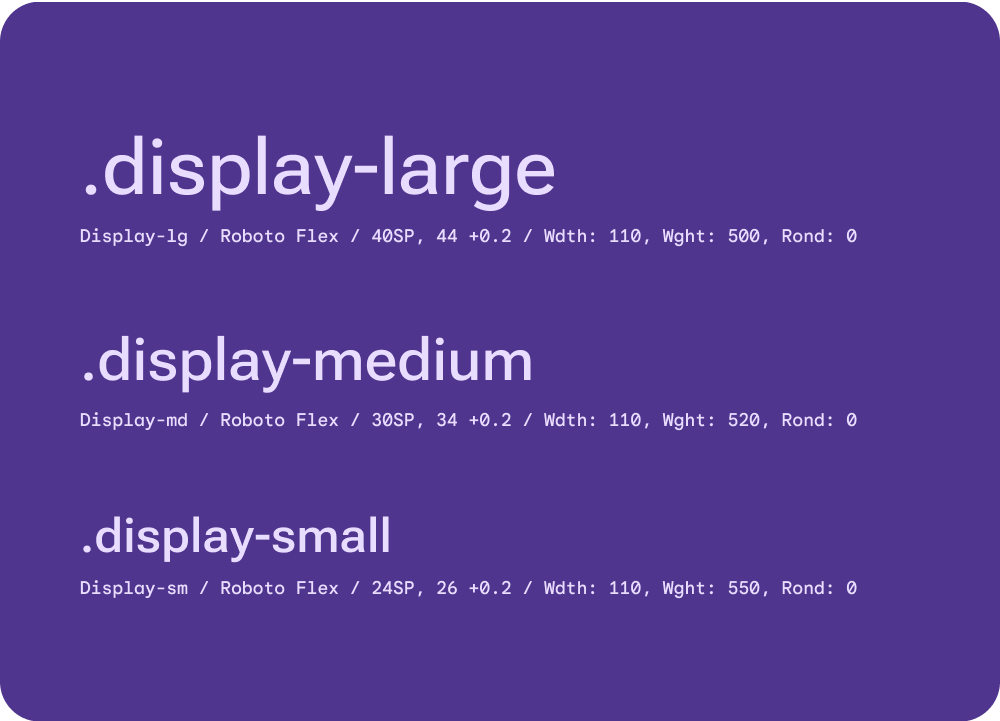
التكبير/التصغير: لا يمكن تكبير/تصغير أيّ من أنماط نوع "العرض" باستخدام إعدادات حجم الخط المفضّلة التي يمكن للمستخدم ضبطها. لا يُسمح بتكبير الخطوط التي تزيد عن 20sp بسبب مساحة الشاشة المحدودة على أجهزة Wear OS.
العنوان
العنوان هو نص هرمي يُستخدَم كآلية للتنقّل، مثل صفحة أو عنوان قسم أو عنوان قسم فرعي (في حال TitleSmall).
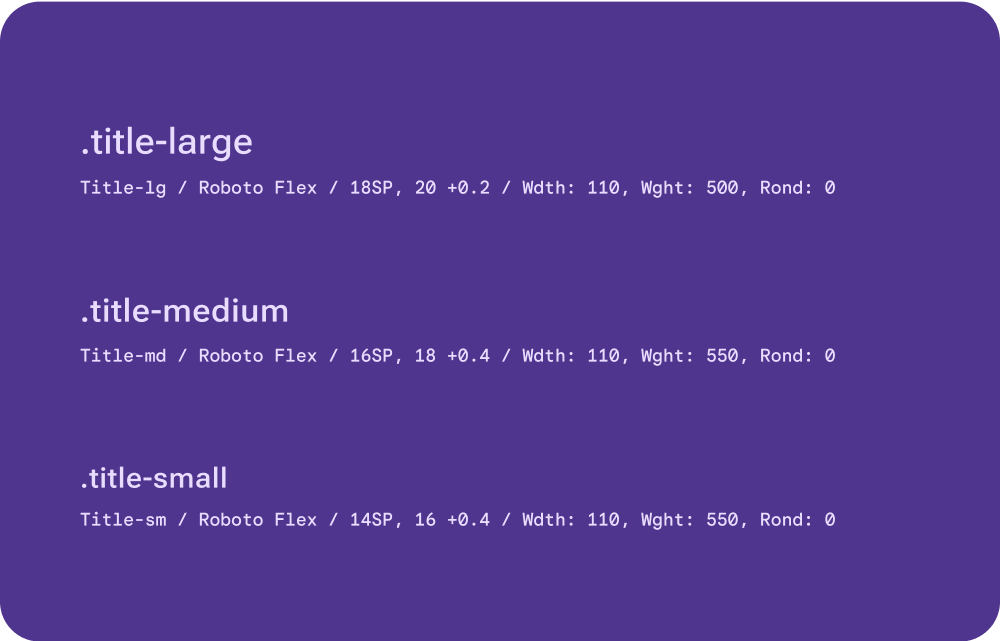
التصغير/التكبير: يتم تصغير/تكبير جميع أنماط أنواع العناوين وفقًا لإعدادات حجم الخط المفضّلة التي يمكن للمستخدم ضبطها. لا يُسمح بتكبير الخطوط التي تزيد عن 20sp بسبب محدودية مساحة الشاشة على أجهزة Wear OS.
التصنيف
يُستخدَم التصنيف للنص على مستوى المكوّن الذي يصف الإجراء الذي قد يحدث عند التفاعل معه. إنّ الاستخدام الأكثر شيوعًا واستخدامًا على نطاق واسع للتصنيف هو للنصّ المُدمَج في زرّ.
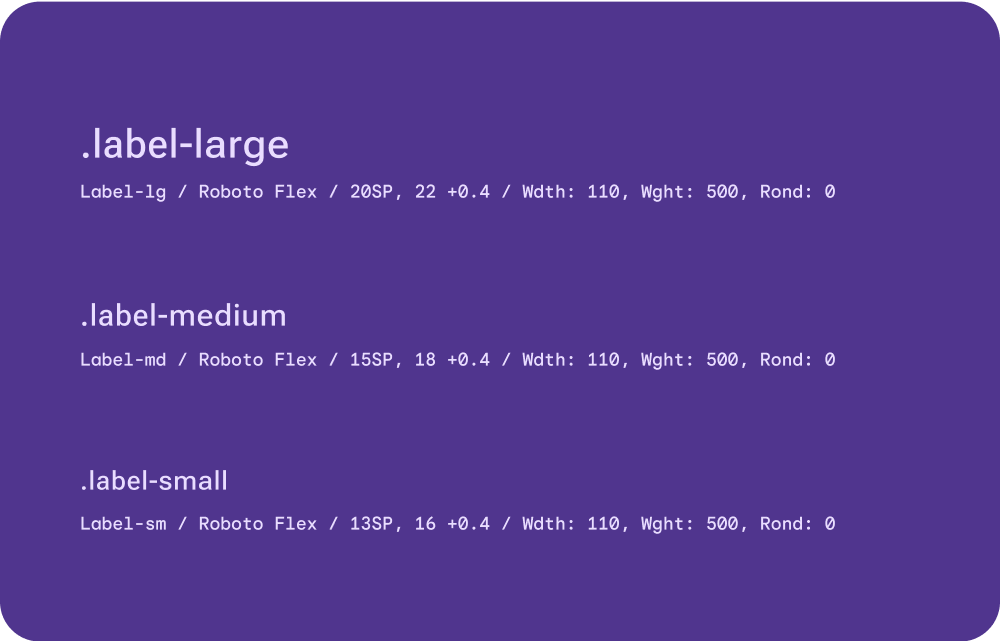
التصغير/التكبير: يمكن تصغير/تكبير التصنيفَين LabelMedium وSmall وفقًا لإعدادات حجم الخط المفضّلة التي يمكن للمستخدم ضبطها، ولكن لا يمكن تصغير/تكبير التصنيف LabelLarge. لا يُسمح بتكبير الخطوط التي تزيد عن 20sp بسبب المساحة المحدودة للشاشة على أجهزة Wear OS.
الجسم
يتم تخصيص الحقل "النص" لنص المحتوى، مثل فقرات النص الرئيسي والنص المستخدَم في عرض البيانات المعقد والطوابع الزمنية والبيانات الوصفية.
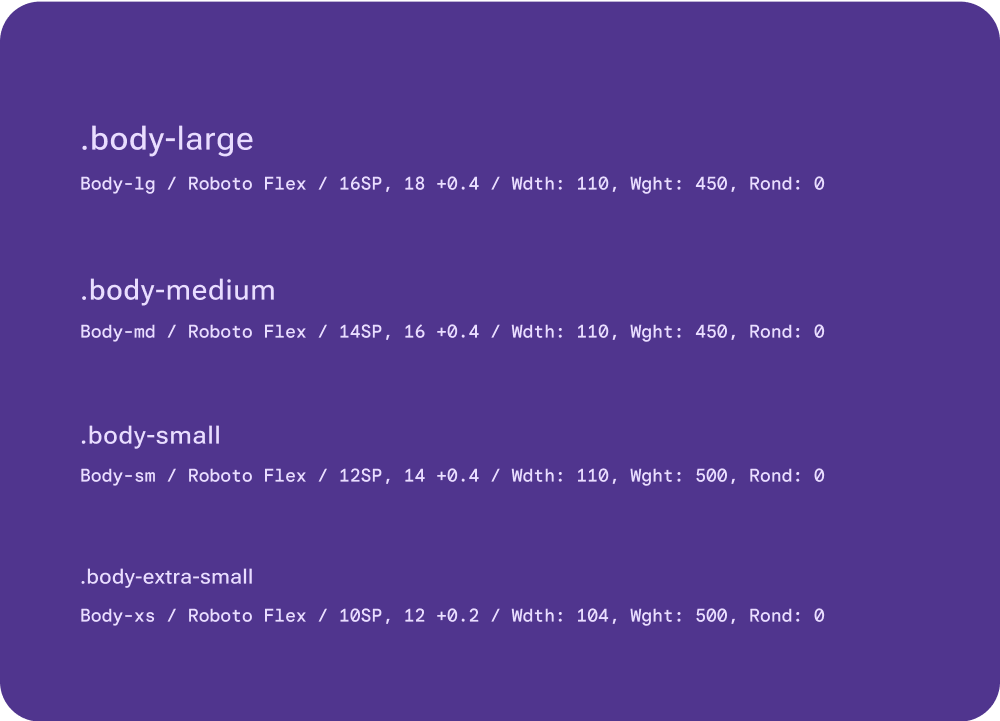
التصغير/التكبير: يتم تصغير/تكبير جميع أنماط أنواع Arc وفقًا لإعدادات حجم الخط المفضّلة التي يمكن للمستخدم ضبطها. لا يُسمح بتكبير الخطوط التي تزيد عن 20sp بسبب محدودية مساحة الشاشة على أجهزة Wear OS.
الرقم
تُستخدَم أنماط النصوص الرقمية للأرقام، وعادةً ما تقتصر على بضع أحرف. يمكن أن تأخذ خصائص أكثر تعبيرية عند أحجام الشاشة الأكبر. توفّر مرونة في توسيع محور العرض مع الحد الأدنى من المخاوف المتعلّقة بترجمة النص وتعديل حجمه.
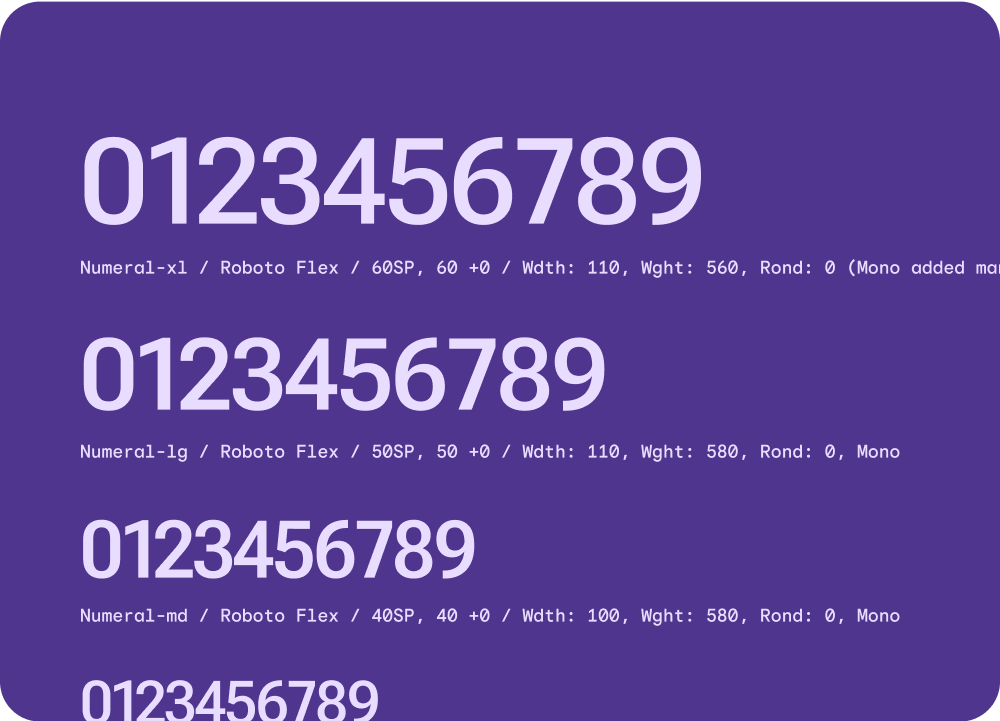
التكبير/التصغير: لا يمكن تكبير/تصغير أي من أنماط الأرقام باستخدام إعدادات حجم الخط المفضّلة التي يمكن للمستخدم ضبطها. لا يُسمح بتكبير الخطوط التي تزيد عن 20sp بسبب مساحة الشاشة المحدودة على أجهزة Wear OS.
تنسيق جدولي/أحادي: في بعض الحالات، أضِف تنسيقًا جدوليًا ومساحة أحادية إلى الأرقام، خاصةً عند الانتقال إلى الأرقام أو تغييرها باستخدام الحركة، وكنت تريد تجنُّب الأرقام التي تنتقل من مكان إلى آخر بسبب اختلاف عرضها. تساعد هذه المسافة في جعل جميع الأحرف بنفس العرض. على سبيل المثال، يمكن أن يكون ذلك في ملف المختار الذي يتضمّن رقمًا في قائمة قابلة للانتقال.
قوس
يُستخدَم نص عنوان القوس للنص المنحني الذي يشكّل الإشارات في واجهة المستخدم، مثل نص الوقت والعلامات المنحنية. محور خط مخصّص لتحسين النص على طول منحنى معيّن، ولتسهيل التوافق مع المسافات المختلفة التي تظهر بين الأحرف عند وضعها في أعلى الشاشة المنحنية بدلاً من أسفلها
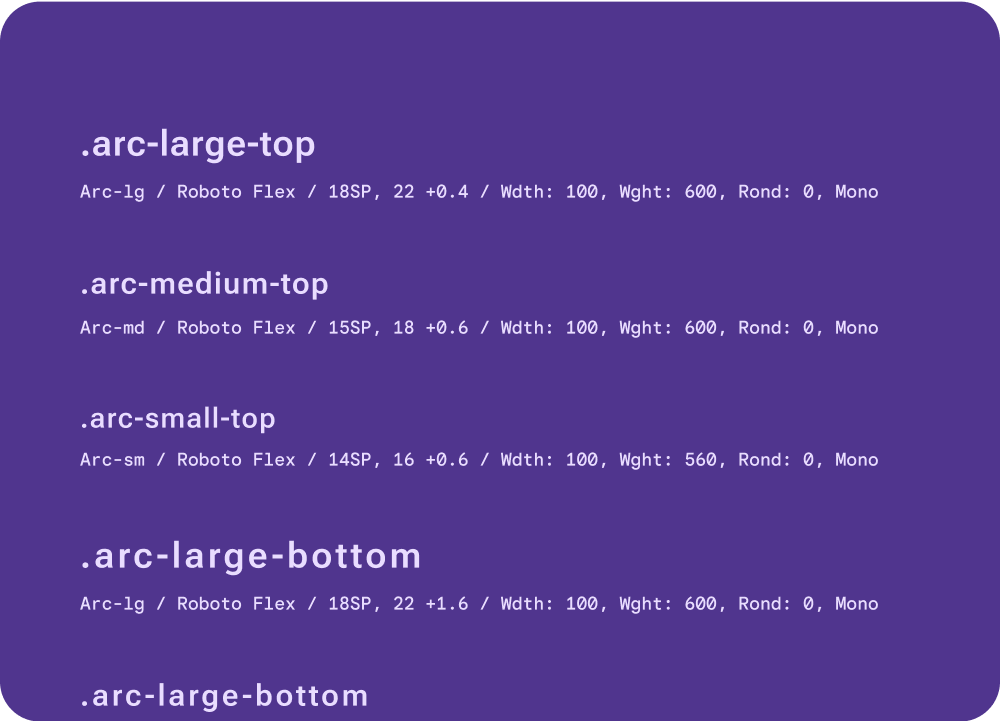
التصغير/التكبير: يتم تصغير/تكبير جميع أنماط نوع النص الأساسي وفقًا لإعدادات حجم الخط المفضّلة التي يمكن للمستخدم ضبطها. لا يُسمح بتكبير الخطوط التي تزيد عن 20sp بسبب محدودية مساحة الشاشة على أجهزة Wear OS.
نص جدولي/نص أحادي اللون: أضِف مسافة بين النصّين الجدولي والأحادي اللون إلى النصّ المنحني. يساعد التباعد الجدولي والخط المنفرد في جعل جميع الأحرف بنفس العرض.

